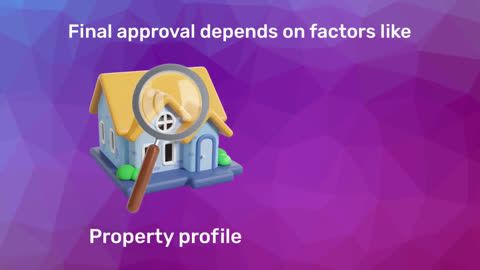In this guide, we will dive into the RERA fees calculation process, explain the use of a RERA fee calculator, and explore how home loans play a vital role in real estate transactions.
Understanding RERA Fees and Charges
Before diving into the calculation process, let us first understand what these fees are and why they are charged. Under the RERA Act, every real estate project (above a certain size) must be registered with the respective state’s RERA authority. The registration process involves the payment of fees, which are usually based on the project's size, location, and other factors.These charges can include:
1. Registration fees for projects: Developers must pay a registration fee for each project they plan to develop. The amount varies depending on the size and type of the project.
2. Renewal fees: If the project takes longer than expected and the registration expires, renewal fees are applicable.
3. Penalty fees: Developers may incur penalties for delays, non-compliance, or incomplete information.
Key factors involved in RERA fees calculation
1. Type of project: Residential, commercial, and mixed-use projects may have different fee structures.2. Land area: The size of the land (in square meters) is a critical factor in determining the registration fee.
3. State-specific rules: Each state has its own RERA authority, and the fee structure can vary accordingly.
Step-by-step guide to calculate RERA fees
The process of calculating RERA fees can seem complex, but it can be simplified by breaking it down into easy steps:1. Identify the project type: Whether it’s residential, commercial, or a mixed-use project, identify the project category as fees can differ based on this classification.
2. Measure the project size: Calculate the total land area in square meters. The RERA fee is generally calculated on a per-square-meter basis.
3. Consult state-specific guidelines: Visit the official RERA website for your state and check the fee structure. Each state has laid out clear guidelines for RERA fees based on the project’s size and location.
4. Use a RERA fee calculator: To simplify the process, use a RERA fee calculator available on various official RERA portals or third-party websites. The calculator takes the above factors into account and gives an accurate estimate.
Using a RERA fee calculator
A RERA fee calculator is an online tool designed to simplify the fee calculation process. Here’s how to use it:1. Enter the project details: You will need to input the project type, total area, and location (state).
2. Calculate the fees: The tool will automatically apply the state’s RERA rules and fee structure to give you an estimate.
3. Review the estimate: Once the calculation is done, you’ll receive a detailed breakdown of the fees, which includes registration fees, penalties (if any), and renewal charges.
Importance of accurate RERA fees calculation
Accurate fee calculation is vital for several reasons:1. Compliance with RERA regulations: Miscalculating or underreporting fees can lead to penalties, legal issues, and delays in project registration.
2. Financial planning: For developers, knowing the exact fees helps in budgeting and cost management. For homebuyers, understanding the fees adds transparency when evaluating the project’s legitimacy.
3. Smooth registration process: Calculating the correct fees ensures there are no obstacles during the registration, reducing chances of rejections or additional delays.
Example of RERA fees calculation
Let’s consider an example to understand the process better.Suppose a developer in Maharashtra plans to register a residential project with a land area of 5,000 square meters. The RERA fee structure in Maharashtra may be Rs. 10 per square meter for residential projects.
Here’s how the calculation would work:
Project area: 5,000 square meters
Fee per square meter: Rs. 10
Total registration fee: 5,000 × Rs. 10 = Rs. 50,000
In this case, the developer would need to pay Rs. 50,000 for RERA registration. Using a RERA fee calculator can help verify this amount quickly.
Common mistakes to avoid in RERA fees calculation
Accurately calculating RERA fees is essential for compliance and avoiding legal issues. Here’s a quick overview of common mistakes to avoid during the process:1. Incorrect project classification: Misidentifying the project as residential, commercial, or mixed-use can lead to wrong fee calculations.
2. Overlooking state-specific guidelines: Each state has different fee structures. Failing to check the applicable rates can result in underpayment or overpayment.
3. Incorrect land area measurement: Not calculating the exact land area in square meters can lead to errors in the final fee.
4. Ignoring additional charges: Renewal, penalty, and late fees should be included in the overall calculation.
5. Neglecting to use a RERA fee calculator: Manual calculations can lead to errors; using a calculator ensures accuracy.
Additional Read: How RERA is going to alter the real estate market
Financing RERA-registered projects: The role of home loans
RERA registration ensures that homebuyers are investing in legitimate and transparent projects. If you are planning to purchase a property in a RERA-registered project, you can finance it through a home loan. Home loans are available from various financial institutions with flexible repayment options.Using a home loan EMI calculator can help you understand your monthly commitments and plan your finances accordingly. For instance, a home loan from Bajaj Housing Finance can ease the financial burden, offering low-interest rates, long tenures, and quick approvals.
Why Bajaj Housing Finance Home Loan?
Bajaj Housing Finance offers tailored home loan solutions for homebuyers investing residential projects. With competitive interest rates, easy documentation, and swift processing, you can turn your dream home into reality without hassle. Additionally, you can use tools like a home loan EMI calculator and balance transfer options to manage your finances efficiently.Here are a few reasons why you should choose Bajaj Housing Finance Home Loan:
1. Competitive interest rates: Bajaj Housing Finance offers some of the most competitive home loan interest rates in the market, ensuring that your home loan remains affordable throughout its tenure.
2. Flexible repayment options: With flexible repayment options, borrowers can choose a plan that best fits their financial situation, making it easier to manage monthly payments.
3. Quick and easy processing: The application process for a Bajaj Housing Finance Home Loan is streamlined and user-friendly, ensuring quick approval and disbursement.
Explore Bajaj Housing Finance Home Loan today and experience a seamless way to finance your dream home.




